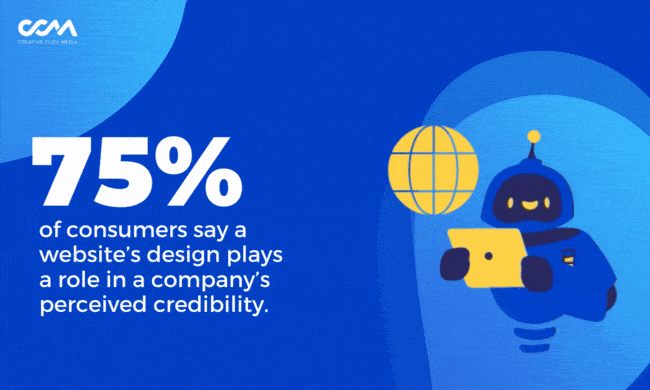When it comes to your business, you may believe your products and services speak for themselves. Not only have you put in countless hours developing your skillset, honing your expertise, and perfecting your offerings, but you’ve also built a solid reputation and nurtured valuable client relationships. And yet – your bottom line doesn’t reflect your business’s true potential. Could the problem be your B2B website design?
In today’s digitally driven world, your website is no longer just an online “brochure” – it has evolved into a dynamic gateway that connects you with potential customers, builds brand awareness and ultimately impacts your bottom line. It acts as a 24/7 sales representative, always ready to engage with prospects, showcase your offerings and establish your credibility.
But how much does your B2B web design really influence your financial success? Is it merely a digital placeholder for your storefront, or a powerful catalyst for exponential growth? Whether you’re a seasoned business owner or just starting out, understanding the impact of your B2B website design is crucial. Even if the majority of your leads come from referrals or in-person interactions, overlooking the potential of your website means missing out on a vast pool of potential business and untapped opportunities. It is the digital engine that can propel your business toward unparalleled success, driving lead generation, enhancing conversions and ultimately boosting your bottom line.
B2B Website Design Statistics
I know what you’re thinking – of course a digital marketing agency is going to say B2B website design is important! But don’t take our word for it – we’ll let the numbers speak for themselves. These B2B website design statistics cut through the skepticism and highlight the tangible results achieved by B2B companies that prioritize their website’s design and functionality:
Over 50% of B2B buyers have transitioned into a fully digital purchasing process since the pandemic.
The Takeaway: The landscape of B2B purchasing has undergone a significant transformation since the start of the COVID-19 pandemic in 2020. With over half of all B2B buyers now embracing fully digital purchases, it’s clear that businesses need to adapt and prioritize their online presence. The shift towards digital channels means that your B2B website plays a more crucial role than ever in capturing and nurturing leads, showcasing your offerings and facilitating seamless online transactions.
75% of consumers say a website’s design plays a role in a company’s perceived credibility.
The Takeaway: The design of your website holds immense power in shaping the perception of your company among consumers. Your website serves as a virtual storefront, and its design is a direct reflection of your brand’s identity and values. A well-designed website instills trust, conveys professionalism and establishes a positive first impression, which can ultimately lead to increased customer engagement, conversions and brand loyalty. By prioritizing the design aspects of your website, business owners can effectively differentiate themselves from competitors, build a strong online reputation and inspire confidence in potential customers.
76% of consumers will research your competitors if your website offers a poor user experience.
The Takeaway: Today’s consumers have high expectations when it comes to website usability, navigation, and overall experience. A website that is slow, confusing, or difficult to navigate can quickly deter potential customers and drive them straight into the waiting arms of your competitors. By prioritizing user experience, optimizing website performance and implementing intuitive design elements, business owners can retain visitors, keep them engaged and increase the likelihood of conversions.
As these statistics demonstrate, it’s clear that the design and functionality of a B2B website have a profound impact on a business’s success. The shift towards digital purchasing, the influence of website design on perceived credibility and the significant consequences of a poor user experience all underscore the importance of prioritizing website optimization. Business owners must recognize that their website is more than just a digital presence—it is a powerful tool that can shape customer perceptions, drive conversions, and ultimately impact the bottom line.
Common Pitfalls That May Be Hindering Your B2B Website
It’s important to note that simply having a B2B website doesn’t guarantee success – it needs to be strategically designed to drive sales and convert clients. Even with the knowledge of the importance of a strong B2B website design, business owners often encounter common challenges and pitfalls that can hinder the effectiveness of their website. By addressing these challenges, businesses can optimize their website’s impact on their bottom line. Here are some key challenges to be mindful of:
Misusing Your Budget
One common challenge businesses face when it comes to B2B website design is misusing their budget. Limited resources can pose a significant barrier to achieving an ideal website design. However, it’s crucial to make strategic decisions and allocate resources effectively. Careful planning, prioritizing essential features and exploring cost-effective options such as website builders or pre-designed templates can help optimize budget utilization without compromising the overall design and functionality of the website.
Lacking Consistency
Maintaining consistency across multiple platforms and devices is another challenge many B2B businesses encounter. With the vast array of devices and screen sizes used by potential customers, ensuring a consistent visual experience is essential. Implementing responsive design principles, conducting thorough testing across various platforms and adhering to brand guidelines can help businesses achieve visual consistency and deliver a seamless user experience regardless of the device being used.
Forgetting Functionality
In the pursuit of an aesthetically pleasing website, some businesses may overlook the importance of functionality. While an attractive design is important, it should never come at the expense of usability. Overcomplicating design elements or sacrificing user-friendly functionality can lead to frustration for visitors and hinder conversions. Striking the right balance between aesthetics and functionality is crucial to ensure that the website not only looks visually appealing but also provides a seamless and intuitive user experience.
Neglecting Maintenance
All websites require ongoing attention to ensure optimal performance, security and compatibility with evolving technologies – B2B included. Regular updates, security audits and monitoring website performance are essential to address potential issues promptly. By implementing a maintenance schedule and staying proactive in website upkeep, businesses can avoid technical glitches, enhance user experience and maintain a consistently high level of website performance.
Putting Mobile Second
With the increasing number of users accessing websites on mobile devices, it is vital for businesses to prioritize mobile responsiveness. Neglecting mobile optimization can result in a poor user experience, high bounce rates and missed opportunities for conversions. By adopting a mobile-first approach, optimizing content and design for smaller screens and conducting thorough testing across various mobile devices, businesses can ensure their B2B website is accessible and user-friendly for mobile users.
Which B2B Website Design Elements Impact Your ROI?
When it comes to B2B website design, certain elements play a significant role in influencing your bottom line and driving business success. By understanding and strategically implementing these design elements, you can optimize your website to maximize conversions, enhance user experience and ultimately impact your bottom line. Here are some key B2B web design elements to consider:
Trust Signals
Building trust is essential in the B2B space – after all, you probably wouldn’t want to work with a business you didn’t trust either! Incorporate trust signals such as customer testimonials, case studies, industry certifications and security badges to instill confidence in potential buyers. These elements reassure visitors of your credibility, professionalism and ability to meet their needs, which will positively impact conversion rates.
Clear Call-to-Actions (CTAs)
Well-placed and prominent CTAs guide visitors toward the desired actions, such as making a purchase, requesting a quote, or filling out a contact form. Utilizing strategic placement, compelling copy and visually distinct buttons for your CTAs will help to generate leads, increase conversions and propel users through your sales funnel with ease.
Streamlined Forms
If your website involves lead generation or capturing user data, optimizing your forms is crucial. Keep forms concise, asking only for essential information, and minimize the possibility of user error by using smart form design techniques such as auto-filling and real-time validation. Simplifying the form submission process can increase conversions and encourage visitor engagement.
Compelling Copy
Well-crafted website and blog copy communicates your brand’s value proposition, highlights the benefits of your products or services and resonates with your target audience. By creating a compelling content marketing strategy that addresses the pain points and challenges of your potential customers, you can build trust, establish thought leadership and drive conversions. Clear and concise messaging on your blog page and throughout your website, combined with a consistent tone and voice, helps to communicate your brand’s story effectively. This will allow you to differentiate from other businesses and ultimately influence the decision-making process of your website visitors.
Fast Page Load Times
Slow-loading pages can frustrate your website visitors and lead to high bounce rates. Optimizing website performance, minimizing file sizes and leveraging caching techniques can significantly improve page load times. By prioritizing faster load times, you’ll enhance your user experience, reduce abandonment rates and increase the likelihood of conversions.
Maximizing the Impact of B2B Website Design
Incorporating these design elements onto your B2B website is an important step towards boosting your bottom line, but there is more to be done to fully capitalize on the potential of B2B website design and maximize its impact on your business’ success. To achieve this, it’s critical to implement a comprehensive set of strategies that optimize their websites for maximum effectiveness. By considering the following key factors, you can truly maximize the impact of your B2B website design:
Collaborating with Web Designers & Developers
Engaging experienced professionals who understand the nuances of B2B website design can make a significant difference in bolstering your ROI and your bottom line. Collaborating with seasoned web designers and developers allows businesses to leverage their expertise in creating visually appealing, user-friendly and conversion-focused websites.
Gathering User Feedback
Regularly conducting user testing and gathering feedback from visitors can provide invaluable insights into the usability and effectiveness of the website design. Understanding user behaviors, preferences, and pain points enables businesses to make data-driven improvements and enhance the overall user experience. You may even want to consider sweetening the deal for these users by offering upgrades or coupons in exchange for their honest feedback.
Integrating SEO Strategies
If your target audience isn’t finding your website, how beneficial are your digital marketing efforts anyway? Incorporating search engine optimization (SEO) strategies into website design ensures that your B2B website ranks well on search engines. By conducting keyword research, optimizing meta tags, and ensuring site structure aligns with SEO best practices, businesses can increase organic web traffic and attract qualified leads to their website.
Incorporating Social Proof
Social proof refers to the psychological phenomenon where people look to others’ actions and opinions to determine their own behavior. By integrating social proof elements like customer testimonials, case studies and client logos into your B2B website, you can demonstrate credibility and build trust. Highlighting success stories and positive experiences showcases the value and reliability of your offerings while featuring well-known clients adds another layer of credibility. These social proof elements serve as powerful endorsements that work towards increasing confidence and driving conversions.
Implementing Personalization
Tailoring the user experience by incorporating personalization techniques is a highly effective part of any successful B2B web strategy. By leveraging user data such as browsing behavior and past interactions, businesses can deliver customized content, product recommendations and targeted messaging, which is a great example of creating an engaging and relevant experience for visitors. Harnessing personalization not only enhances user satisfaction but also increases the likelihood of conversions by providing visitors with tailored recommendations and information that align with their specific needs and preferences.
The Bottom Line
When it comes to your B2B website, the bottom line is this: A well-designed website serves as a powerful tool to attract, engage, and convert potential customers. By incorporating intuitive navigation, compelling visuals, clear call-to-actions, trust-building elements and personalized experiences, businesses can create a user-centric website that enhances credibility, drives conversions and fosters long-term growth. Addressing common challenges and making necessary changes ensures that businesses are maximizing the potential of their B2B website design.
At Creative Click Media, we understand the critical role that B2B website design plays in achieving success and securing a higher ROI. We help B2B businesses just like yours unlock the full potential of their websites with our years of web design experience, digital marketing expertise and boundless creativity. Through a combination of strategic design, data-driven optimization and seamless user experience, we strive to empower B2B businesses to elevate their online presence, drive results and maximize their bottom line. More traffic, leads and sales are only a click away – contact us to see how our comprehensive web design services can transform your B2B website into a powerful asset that boosts your bottom line.






